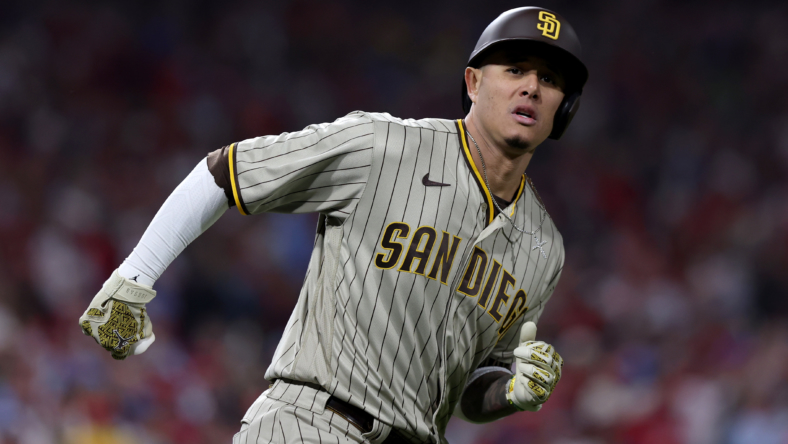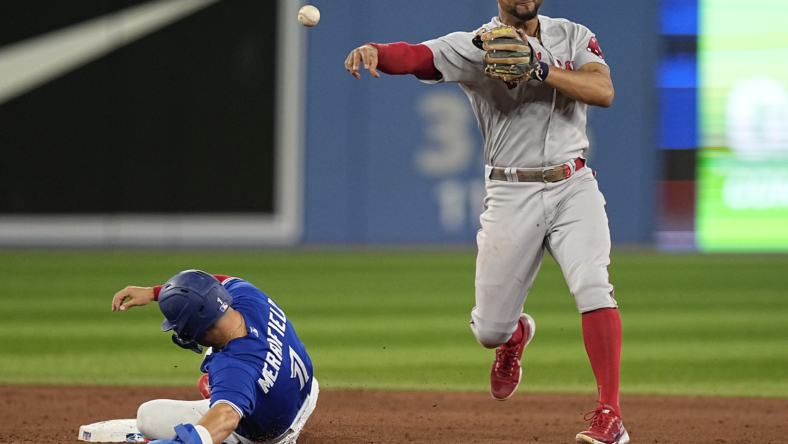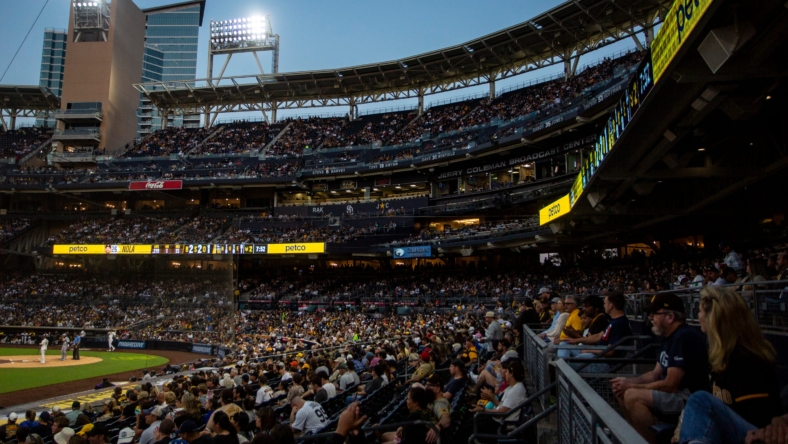
Forget everything you’ve ever been taught about small markets and big markets in baseball.
Because it’s a lie. It always has been when it comes to the narrative teams and the league spin when it comes to paying players.
These days it’s The Big Lie.
This is a whole new world of baseball economics. The San Diego Padres showed us that once again over the weekend with another mind-blowing contract, this one a $350 million extension for Manny Machado. Which makes that new world Manny Machado’s world right now. And means we’re just living in it.
Next year at this time it’ll probably be Shohei Ohtani’s world. And the year after that, Juan Soto’s world. And onto the next.
As baseball commissioner Rob Manfred publicly doubts the sustainability of San Diego Padres owner Peter Seidler’s spending habits and the league forms another economic committee to wring its hands over the latest round of record payroll spending, don’t fall for the inevitable narrative.
Believe your bulging eyes.
Seidler and New York Mets owner Steve Cohen aren’t idiots. They didn’t become rich by spending foolishly in their other business ventures.
The fact is they’re in a very lucrative industry that has leveraged its live-entertainment content (and antitrust exemption) to assure wide lanes of profitability for all its teams annually over the last decade-plus, in addition to skyrocketing franchise values that always have provided the surest form of ownership enrichment for a century before that.
Manny Machado’s 11-year extension — which replaced the remaining six years of a $300-million, 10-year free agent deal signed in 2019 — is just the latest individual example of the financial health of the industry.
And Seidler’s Padres might be an even better team example than Cohen’s big-city Mets.
San Diego Padres spending spree

Consider these contracts the San Diego Padres have negotiated in roughly the last two years alone (with the player’s current age):
- Machado, 30 — $350 million, 11 years (through 2033). Note: Replaces final six years of a $300 million, 10-year deal.
- Fernando Tatis Jr., 24 — $340 million, 14 years (2034).
- Xander Bogaerts, 30 — $280 million, 11 years (2033).
- Yu Darvish, 36 — $108 million, 6 years (2028). Note: Replaces final year of a $126 million, six year deal.
- Joe Musgrove, 30 — $100 million, five years (2027).
That’s five nine-figure contracts on one payroll — five more than the Chicago White Sox in big-market Chicago have had in their franchise history. And don’t assume the Padres are done.
Last summer, they pulled off two major trades for ace reliever Josh Hader and, in a blockbuster, young superstar Soto, to bolster a team that came up three wins short of getting to the World Series.
Hader, who makes $14.1 million this year, is eligible for free agency at the end of the year, and assuming good health is an obvious extension candidate.
Soto, a powerful lefty considered by some the best hitter in the game, is even more obvious; you don’t trade a truckload of top prospects for a young hitter like that without an end game involving a massive extension. He’s already making $23 million this year.
Sustainable?
“I don’t spend too much time, if any, thinking about what other people are thinking,” Seidler told reporters in camp in response to Manfred’s stated doubts and just a few days ahead of the Machado extension.
“We believe we have a great chance to go after that trophy and to deliver to San Diego its first parade,” he added. “And with a great deal of seriousness and humility, the overall theme is we’re here to win a title. That’s what I expect.”
Small-market San Diego Padres vs. big-market teams

How does a team situated in such a relatively small media market have the wherewithal to go toe-to-toe financially with the biggest markets in the game — and even swamp a few of their relative dinghies (see: Chicago Cubs)?
It starts with an outsized-for-its-market, $1.2 billion, 20-year regional TV deal struck in 2012 at the leading edge of the sport’s broadcast-rights boom.
Now halfway through that deal, the San Diego Padres are one of 14 teams that could be adversely affected by the impending bankruptcy of Diamond Sports, the parent company of their regional network.
But they’re still spending big.
To win, yes, as Seidler said.
But not to lose money in the process, either.
Again, believe your eyes. Believe what baseball people do, not what they say.
“The Padres are not a small market,” agent Scott Boras said, “because they’re one of the few major league teams that has four and five million people and only one sport in town. It’s kind of like the San Antonio Spurs in the NBA.”
Market smaller than New York? Of course. Sports-entertainment market share within the market? Big.
Boras made those comments in the days leading up to the deal his agency struck with the San Diego Padres for Bogaerts.
“They’re a different franchise because there is no professional sports competition,” Boras said. “They’re a club that has stopped selling season tickets [in early December]. I know of few major-league teams that have stopped selling tickets, including major-market teams.”
Will winning sell for San Diego Padres?

Seidler, longtime Dodgers owner Walter O’Malley’s grandson, is part of an ownership group that includes his brother and cousins.
They come from a long line of baseball business minds. And one truism about sports economics that will never go away as long there are fans is that winning sells — and sometimes even the aggressive attempt to win sells. And these Padres, again, might be the best examples.
Consider why they’re out of season-ticket inventory in December.
While MLB attendance has been declining for years, these new-look San Diego Padres just recorded their highest home attendance mark in 2022 (2.99 million) since the first season of Petco Park in 2004 (excluding years of pandemic-related attendance restrictions).
It was the second-highest attendance mark in franchise history and represented a 24.7-percent increase over the most recent season without restrictions (2019). And it might only be going up this year after their deep-October run. The rest of MLB experienced a 2.3-percent drop in 2022 from 2019.
All of which means that baseball and its fans don’t need any more economic committees; they need more Peter Seidlers.
Gordon Wittenmyer covers Major League Baseball for Sportsnaut. You can follow him on Twitter at @GDubCub.